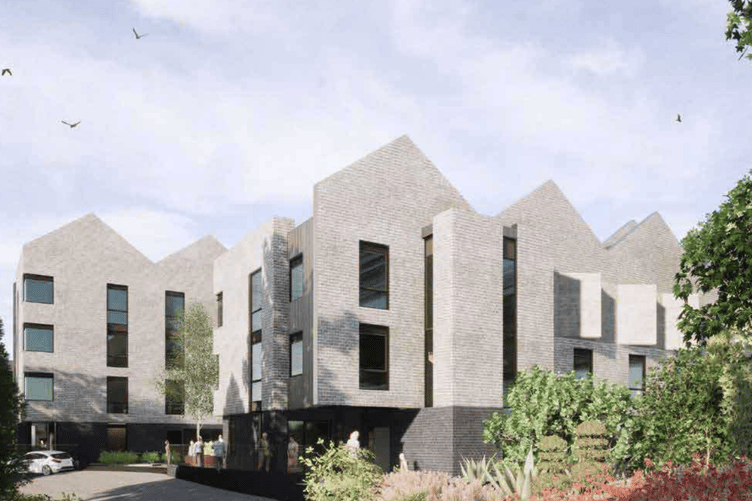Cornwallis Care Services applied to demolish Meadowbrook House in Lostwithiel and replace it with a new care home as well as a close care apartment building.
The application has caused controversy in the town with a banner demanding the plan is refused being visible on the main road through Lostwithiel.
Meadowbrook House specialises in dementia nursing, while also including those with Parkinson’s Disease, stroke and respiratory conditions.
The new plans included a new 36-unit close care apartment building – allowing older people to live independently with support – and a new 77-bedroom care home. Cornwall Council’s planning department recommended approval due to the delivery of close care housing in a sustainable location during a housing crisis.
However, it noted that the proposed development would be visible from the site entrance on Grenville Road due to its size, which would prove to be a “moderate” impact on neighbouring properties. The significant loss of some trees was also judged as a negative of the scheme.
The application was brought before Cornwall Council’s central planning committee last week by local member Cllr Sarah Preece due to her concerns relating to its size and appearance in relation to the site’s significant heritage context, lying within the Boconnoc area of great landscape value.
David Dunkley has lived in a neighbouring property for 46 years. He told the committee the proposal was to build a “monstrosity” between historic buildings of architectural value, including a property designed by celebrated Cornish architect Silvanus Trevail.
“I object to the scale and massing, which can be seen from Lostwithiel’s conservation area,” he said, adding that despite changes to the plans there would still be overlooking and “unreasonable loss of privacy”.
Cllr Michelle Nineham, of Lostwithiel Town Council, said the town was a great place to grow old and her council did not oppose increasing supported living in care homes. “However, we believe that the visual impact of this proposal will significantly harm the view to the entrance of the town.
“If built, it would be the tallest building in town after the church, screened only by a thin line of trees, meaning the building will be visible at the top of the hill for at least half the year if not more, and will be an imposing edifice over neighbouring properties.”
She added: “Despite an additional 80 beds in the proposed development, only eight additional car parking spaces have been allocated. We believe that the development is too large for the amount of parking available.”
Chloe Pitt, a chartered town planner representing the applicant, said there was a pressing need for such accommodation in the area. “We acknowledge the concerns raised by the divisional member, town council, neighbours and consultees. However, this scheme has evolved significantly through two rounds of public consultation and ongoing officer dialogue. In response, we’ve made a series of meaningful changes.”
These included reducing the eastern wing from four storeys to three to minimise overlooking and over-shadowing of a neighbouring house. She added that the site has extant permission from 2019 for a four-storey building and this new application had a more modest form and footprint than the original scheme, despite having more beds.
Cllr Preece said she was aware of the need for more care accommodation in Cornwall. “However, this is a major application – a large scale institutional building in a medieval townscape, one of the last protected medieval towns in Cornwall.”
She asked for the reduction of a whole floor, meaning 33 fewer beds than proposed, and an increase in the amount of money granted to the local medical surgery to allow it to cope realistically with the larger number of residents proposed. The meeting heard that a reduction in size wasn’t possible or viable.
Following debate, councillors voted in favour of refusal on the grounds of its scale, massing and design being in stark contrast to other buildings in the town as well as the felling of trees which add to the character of the area. Five councillors were in favour of refusal with four against and no abstentions.





Comments
This article has no comments yet. Be the first to leave a comment.